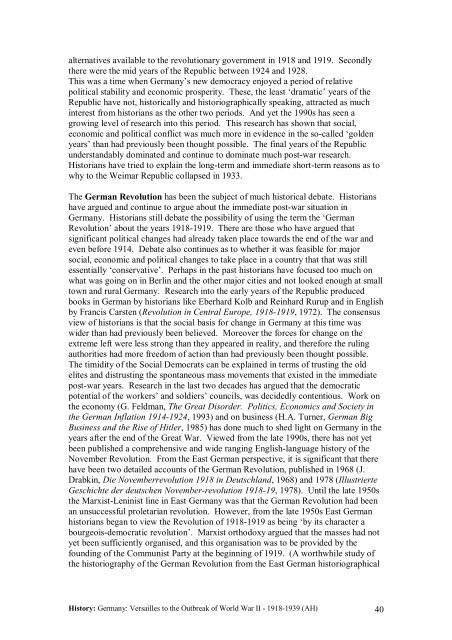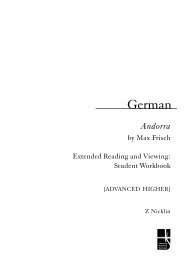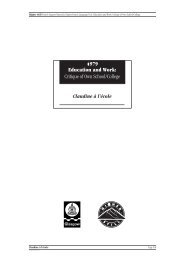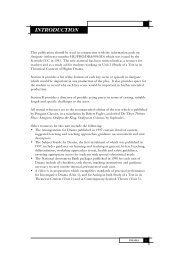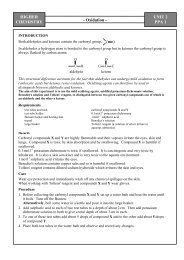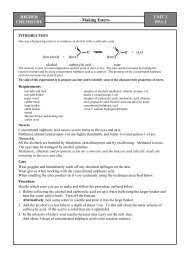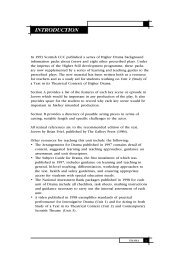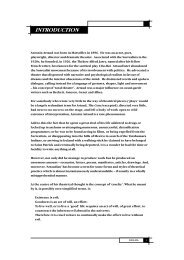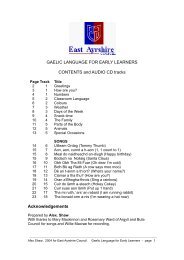PDF file: History - Advanced Higher - Germany - Education Scotland
PDF file: History - Advanced Higher - Germany - Education Scotland
PDF file: History - Advanced Higher - Germany - Education Scotland
You also want an ePaper? Increase the reach of your titles
YUMPU automatically turns print PDFs into web optimized ePapers that Google loves.
alternatives available to the revolutionary government in 1918 and 1919. Secondly<br />
there were the mid years of the Republic between 1924 and 1928.<br />
This was a time when <strong>Germany</strong>’s new democracy enjoyed a period of relative<br />
political stability and economic prosperity. These, the least ‘dramatic’ years of the<br />
Republic have not, historically and historiographically speaking, attracted as much<br />
interest from historians as the other two periods. And yet the 1990s has seen a<br />
growing level of research into this period. This research has shown that social,<br />
economic and political conflict was much more in evidence in the so-called ‘golden<br />
years’ than had previously been thought possible. The final years of the Republic<br />
understandably dominated and continue to dominate much post-war research.<br />
Historians have tried to explain the long-term and immediate short-term reasons as to<br />
why to the Weimar Republic collapsed in 1933.<br />
The German Revolution has been the subject of much historical debate. Historians<br />
have argued and continue to argue about the immediate post-war situation in<br />
<strong>Germany</strong>. Historians still debate the possibility of using the term the ‘German<br />
Revolution’ about the years 1918-1919. There are those who have argued that<br />
significant political changes had already taken place towards the end of the war and<br />
even before 1914. Debate also continues as to whether it was feasible for major<br />
social, economic and political changes to take place in a country that that was still<br />
essentially ‘conservative’. Perhaps in the past historians have focused too much on<br />
what was going on in Berlin and the other major cities and not looked enough at small<br />
town and rural <strong>Germany</strong>. Research into the early years of the Republic produced<br />
books in German by historians like Eberhard Kolb and Reinhard Rurup and in English<br />
by Francis Carsten (Revolution in Central Europe, 1918-1919, 1972). The consensus<br />
view of historians is that the social basis for change in <strong>Germany</strong> at this time was<br />
wider than had previously been believed. Moreover the forces for change on the<br />
extreme left were less strong than they appeared in reality, and therefore the ruling<br />
authorities had more freedom of action than had previously been thought possible.<br />
The timidity of the Social Democrats can be explained in terms of trusting the old<br />
elites and distrusting the spontaneous mass movements that existed in the immediate<br />
post-war years. Research in the last two decades has argued that the democratic<br />
potential of the workers’ and soldiers’ councils, was decidedly contentious. Work on<br />
the economy (G. Feldman, The Great Disorder. Politics, Economics and Society in<br />
the German Inflation 1914-1924, 1993) and on business (H.A. Turner, German Big<br />
Business and the Rise of Hitler, 1985) has done much to shed light on <strong>Germany</strong> in the<br />
years after the end of the Great War. Viewed from the late 1990s, there has not yet<br />
been published a comprehensive and wide ranging English-language history of the<br />
November Revolution. From the East German perspective, it is significant that there<br />
have been two detailed accounts of the German Revolution, published in 1968 (J.<br />
Drabkin, Die Novemberrevolution 1918 in Deutschland, 1968) and 1978 (Illustrierte<br />
Geschichte der deutschen November-revolution 1918-19, 1978). Until the late 1950s<br />
the Marxist-Leninist line in East <strong>Germany</strong> was that the German Revolution had been<br />
an unsuccessful proletarian revolution. However, from the late 1950s East German<br />
historians began to view the Revolution of 1918-1919 as being ‘by its character a<br />
bourgeois-democratic revolution’. Marxist orthodoxy argued that the masses had not<br />
yet been sufficiently organised, and this organisation was to be provided by the<br />
founding of the Communist Party at the beginning of 1919. (A worthwhile study of<br />
the historiography of the German Revolution from the East German historiographical<br />
<strong>History</strong>: <strong>Germany</strong>: Versailles to the Outbreak of World War II - 1918-1939 (AH) 40


